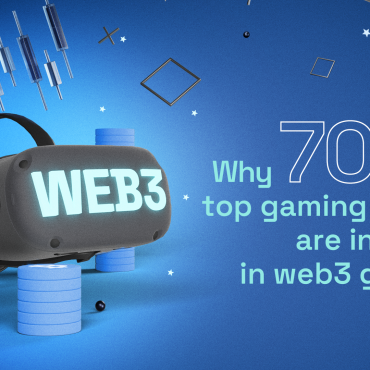The idea of owning a virtual sword, a customized avatar, or any other digital asset is growing more popular in current games. However, the great majority of games function as standalone ecosystems. The items you acquire, often after a large expenditure of time or money, are typically locked within the bounds of their original game world. The goal of cross-game asset interoperability is to break down these restrictions and enable genuine ownership portability.
While complete interoperability remains more of a pipe dream than a reality, emerging technologies and projects are paving the road for a future in which our digital assets can travel with us across diverse gaming landscapes. Let’s look at what interoperability implies, the barriers to adoption, and the potential it has to transform how we engage with Web3 games.
The Importance of Interoperability in Web3 Gaming
Interoperability refers to the capacity of various systems, networks, and applications to collaborate, share, and use data without restriction. In web3 gaming platform, refers to the seamless integration and application of digital assets across numerous game platforms.
It helps to broaden this concept by guaranteeing that assets maintain their worth and functioning regardless of the gaming environment in which they are used. They promote a unified digital economy by increasing the value and usability of digital assets beyond the boundaries of a single game or platform.
What is Interoperability in Web3 Games?
Cross-game asset interoperability is defined as the ability to use a digital asset from one game in another that is compatible but not the same.
It enables several blockchain gaming platforms to connect, share data, and transact with one another effortlessly. It improves the user experience, encourages innovation, and contributes to the establishment of a more transparent and cooperative gaming industry. It is also a critical component of a more interconnected and adaptive blockchain ecosystem.
This has very profound effects:
Increased asset utility
Consider getting a decorative costume in your favorite battle royale game that may be worn by your avatar in a virtual social area, or you may even be provided special benefits in a related role-playing game. The value and utility of that cosmetic increase significantly.
True ownership
When assets can move with you, it strengthens the sensation of actual ownership. They become an extension of your digital identity, rather than just assets associated with a certain game account.
New possibilities for developers
Developers no longer need to design for a segregated environment. Cooperation becomes essential, allowing for fascinating cross-game encounters, partnerships, and shared economies.
Significant Metaverse Potential
A metaverse in which you can freely move your identity and a subset of compatible possessions between interconnected virtual worlds is perhaps the pinnacle of interoperability.
Why is it Important for Web3 Games to Interoperate?
Interoperability is vital to the continuous progress of Web3 games, which are becoming an increasingly important part of our daily lives and are more connected, efficient, and integrated than ever before. The ability for different Crypto games to interact fluidly is vital for the following reasons:
Fragmented Ecosystems and Limitations
Play-to-earn games commonly serve as standalone data and functionality platforms. While these distinct networks succeed in their specific sectors, their isolation has severe drawbacks. It fragments the gaming environment, confining assets, NFTs, data, and services within their respective chains.
For example, if a user owns a digital asset in game A, they will be unable to use it in-game B without undergoing difficult and expensive processes. This siloed approach limits the efficiency and flexibility of blockchain technology.
Efficient Data and Value Transfer
Interoperability acts as a bridge, allowing for the frictionless exchange of assets, NFTs, and other tokens between different gaming networks. It streamlines cross-chain transactions and paves the way for a more integrated and user-friendly blockchain environment.
When a user can easily move assets, execute smart contracts, or trade data between different blockchains, the full potential of blockchain technology is unlocked, and the user experience improves.
Enhanced Blockchain Adoption and Scalability
As more sectors and individuals adopt Web3 gaming technologies, the demand for interconnected networks grows. Interoperability lowers barriers to entry, making gaming more accessible and user-friendly. It facilitates the integration of blockchain solutions into existing systems and processes.
Furthermore, interoperability improves scalability by dispersing network demand across several chains. This scalability is critical as blockchain gaming usage grows, guaranteeing that the system can meet increasing demands.
Unlocking New Use Cases and Efficiency
Interoperability enables unique use cases by facilitating seamless cross-chain asset and value exchanges. For example, it enables cross-platform trading, lending, and borrowing in decentralized finance (DeFi).
Users can exchange assets and conduct transactions across multiple gaming platforms without relying on a single game. This not only decreases counterparty risk but also improves efficiency in the DeFi industry.
Blockchain interoperability can also assist supply chain management by making it easier to track products across numerous gaming platforms, increasing transparency and decreasing fraud.
Fostering Innovation and Collaboration
Blockchain gaming interoperability promotes innovation and collaboration by encouraging developers to generate solutions that can operate seamlessly across several gaming networks, reducing the need to build from scratch for each isolated blockchain. This approach promotes the exchange of knowledge, best practices, and resources, resulting in a more dynamic and collaborative blockchain environment.
Significance of Interoperability in Play-to-earn Games
Ownership and Value of Digital Assets
One of the most significant improvements that blockchain gaming brings to the table is enhanced ownership and value of digital assets. Players devote significant time and effort to collecting in-game stuff ranging from strong weapons to uncommon trinkets. Interoperable games allow players to use their digital assets in different games, boosting their utility and worth. These digital assets do not have to adopt the same shape either.
For example, a shield named SonicPower in one RPG could become a card in another deck-building game and a SonicPower-themed virtual building in another. This expanded independence allows players to engage with games in new and exciting ways, as their hard-earned assets become relevant and meaningful beyond a single gaming environment.
Collaborative Gaming Ecosystems
As interoperable gaming takes popularity, we can anticipate a rise in collaborative gaming ecosystems, in which creators collaborate to construct interconnected gaming worlds. This collaboration stimulates innovation and creativity by allowing developers to build on each other’s ideas and game mechanics. For gamers, this means deeper, more diverse gaming experiences, with a plethora of interconnected games and genres to discover.
For example, consider a game in which you must earn unique things by playing another. Perhaps you want to create a Plot in game A but require material only available in game B. Alternatively, there could be unlockable content that is only accessible by showing an NFT from another game. There are lots of new game designs that developers and players can explore.
Emergence of New Business Models
The development of interoperable gaming sets the path for the establishment of new revenue models in the gaming industry, which will eventually benefit both gamers and developers. Shared in-game economies, subscription-based gaming services, and cross-platform asset monetization are just a few of the novel business models that could emerge from interoperable gaming. These new models have the potential to generate more sustainable and successful revenue streams for developers, while also providing gamers with greater flexibility and choice in their gaming experiences.
Consider a popular game, Alien World, that is compatible with a wide range of other games. Alien World may have a marketplace that sells assets from other games, in addition to its own. Alien World might receive a portion of each transaction, while other games would benefit from Alien World’s popularity. This would be similar to department stores in real life. While Costco, Walmart, and other retailers sell their products, they also sell those of other brands. Interoperability has the potential to generate a plethora of new business models.
Potential Use Cases: Where Interoperability Thrives
To understand the transformative potential of cross-game interoperability, consider some intriguing scenarios:
Cross-Genre Customization: Consider obtaining a distinctive cosmetic skin in a racing game by completing a difficult challenge. As a result, your avatar might wear this hard-earned skin in a connected social center, transforming your win into a wearable status symbol that extends beyond the scope of the original game.
Gameplay-Impacting Assets: When taken into a compatible action RPG after completing a tough questline in an MMORPG, a powerful weapon may give exceptional perks. This promotes collaboration among communities and increases the significance of in-game achievements.
Cross-game Tournaments: Consider an eSports event held in a virtual stadium in a metaverse environment. Players bring their most proficient characters, decked with cosmetics won from previous games, and compete in a crossover fighting game for ultimate bragging rights.
Evolving NFTs: Your digital pet creature in a monster-battling game could gain experience and level up as you play, with its stats and appearance directly mirrored in the blockchain-based NFT. It then smoothly joins you on adventures in a buddy fantasy RPG as a full-fledged companion.
Composable NFTs: Imagine different in-game assets. NFTs act as building blocks. A cosmetic helmet, a pair of gauntlets, and a sword from various games may combine to produce a unique full armor set that operates as a single, cohesive asset across them.
The Challenges of Implementing Interoperability
Bringing full cross-game asset interoperability into the mainstream is riddled with challenges:
Technical Barriers: Different games frequently employ radically different engines, and data formats, and have unique balance issues. Establishing consistent standards for describing in-game assets in a way that is easily transportable and interpretable across games presents a substantial engineering problem.
Conflicting Interests: Game developers may be hesitant to give up control over their closed environments. Making objects usable outside of their domain may have an impact on their monetization plans, requiring them to share a portion of revenue gained from interoperable item usage.
Game Balance Disruption: Introducing an asset from another game, especially one with special skills, risks unbalancing carefully designed gameplay systems. Determining how external assets fit in without creating “pay-to-win” dynamics is crucial.
Intellectual Property: The legal landscape around cross-game use of assets with complex IP ownership (particularly branded things) can be difficult to negotiate.
Closing Thoughts
Blockchain technology has ushered in a new era of untapped gaming possibilities. Web3 gaming platform, by enabling interoperability, has the potential to drastically revolutionize the gaming business, ushering in a new paradigm in which games are not isolated entities but rather part of a larger ecosystem.
It is critical to note that, while interoperable games provide exciting possibilities, they do not represent the entire future of gaming. Interoperability, like free play-to-earn games, is expected to have a huge impact on the future of gaming. As developers, players, and industry stakeholders negotiate the developing terrain, one thing is clear: blockchain gaming interoperability is opening a future that is both exciting and unprecedented.




